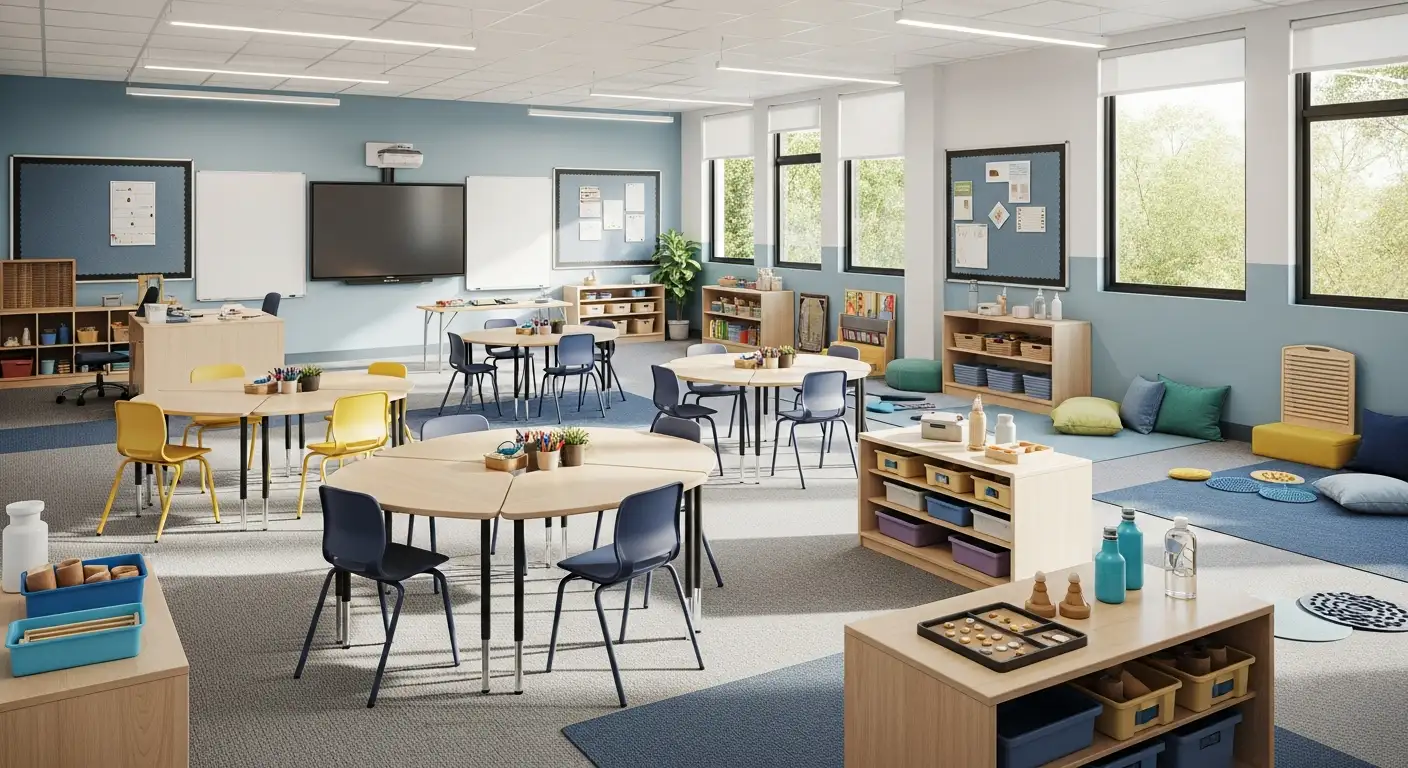Understanding Delay Tolerance in Behavioral Development
Developing tolerance to delays in reinforcement is a critical skill that influences a child's ability to manage frustration, participate in long-term tasks, and reduce problematic behaviors driven by immediate gratification. This article explores empirically supported methods, instructional techniques, and practical applications for teaching delay tolerance, especially in children with developmental disabilities such as autism.
Foundations of Delay Tolerance and Its Importance in Behavior Management

What is delay tolerance in behavioral science?
Delay tolerance is a teaching strategy used to help individuals learn to wait for reinforcement. It involves signaling to the learner that reinforcement—such as praise, attention, or access to preferred items—is about to be delivered once they demonstrate appropriate behavior over a period of waiting. Verbal cues like "just one more minute" or visual signals such as timers or cards can indicate to the child that reinforcement is upcoming. This approach helps the individual understand the timing of reinforcement and prepares them to wait patiently.
The process includes identifying how long the individual can initially wait without challenging behavior, then systematically increasing this wait time. Reinforcement is only delivered if the individual has maintained appropriate behavior for the designated period. As they succeed, the required waiting time is gradually lengthened, reinforcing their capacity to tolerate delays.
How does delay tolerance help reduce problem behaviors?
Many challenging behaviors—such as tantrums, aggression, or escape-motivated actions—are often driven by the individual's desire to access reinforcement immediately or avoid tasks. By teaching delay tolerance, caregivers and educators can directly address these behaviors. When a child learns to wait, they are less likely to resort to challenging behaviors to hasten the delivery of reinforcement or escape from demands.
For example, if a child typically challenges when asked to wait for a turn or to access a preferred activity, systematic delay training can help them understand that patience will result in the desired reward. Over time, this reduces impulsivity and promotes more adaptive responses, making behavior management more effective.
Why is delay tolerance vital for children with autism and related conditions?
Children with autism and language delays often struggle with patience and may exhibit high rates of problem behaviors when faced with demands or restrictions. Teaching them to tolerate delays in reinforcement is especially crucial for their developmental progress and social integration. It helps improve their communication skills, self-control, and ability to handle everyday disappointments.
Research shows that through controlled and gradual schedule thinning during functional communication training (FCT), children can learn to wait for up to a minute or more before receiving reinforcement. This skill not only diminishes problematic behaviors but also fosters better decision-making and social interactions.
Furthermore, incorporating visual or verbal cues, along with consistent practice, allows these skills to generalize across different settings and social partners. Consequently, developing delay tolerance equips children with crucial coping mechanisms that support their learning, independence, and overall well-being.
Implementing Effective Strategies for Teaching Delay Tolerance

How can practitioners teach tolerance to delay in reinforcement effectively?
Teaching individuals to tolerate delays before receiving reinforcement is a crucial step in managing problem behaviors and promoting functional skills. One of the most effective methods involves the systematic use of schedule thinning, where the contingent delay before reinforcement is gradually increased over multiple sessions. This approach can utilize various procedures such as multiple schedules (alternating periods of reinforcement and no reinforcement), chained schedules, delay schedules, or probabilistic delay tactics.
Each of these techniques involves incrementally extending the wait time, helping learners gradually become more comfortable with longer delays. For example, in schedule thinning, a child might initially wait only a few seconds before reinforcement and then, over time, wait for a minute, several minutes, or longer. This incremental process helps in developing patience and self-control.
In addition to schedule thinning, incorporating visual, verbal, and gestural cues is vital. These signals—such as timers, colored cards, or specific verbal prompts—alert the individual when a delay is about to end or reinforcement is available. This clear communication helps reduce frustration and uncertainty, making the wait more manageable.
Combining functional communication training (FCT) with schedule thinning offers a powerful strategy. FCT teaches individuals to request reinforcement appropriately and can be paired with delay cues to promote waiting for larger, more functional reinforcers. When the individual uses a communication response during the delay period, it increases their understanding that waiting is a part of the process.
Moreover, personalizing these strategies to fit the specific needs and pacing of each learner is essential. Systematic, individualized pacing ensures that delays are introduced at a manageable rate, avoiding premature overextension that could lead to frustration or relapse into problem behaviors. Supplementary procedures like contrast stimuli—using different cues or activities—and schedule probing—briefly testing the limits of delay tolerance—can further enhance learning.
Research highlights that when these methods are tailored and implemented consistently, learners develop greater self-control and better generalize their ability to wait across different environments. The combination of gradual schedule reinforcement, clear cues, and personalized pacing creates a comprehensive approach that supports meaningful skill acquisition and reduces problematic behaviors associated with impulsivity or inability to delay gratification.
Research Evidence Supporting Delay Tolerance Training
 Multiple studies highlight the effectiveness of teaching delay tolerance to individuals, especially young children and preschoolers, using structured, evidence-based methods. Research involving children with autism and language delays demonstrates that gradual schedule thinning and reinforcement delay training can significantly increase their capacity to wait for preferred objects, activities, or attention.
Multiple studies highlight the effectiveness of teaching delay tolerance to individuals, especially young children and preschoolers, using structured, evidence-based methods. Research involving children with autism and language delays demonstrates that gradual schedule thinning and reinforcement delay training can significantly increase their capacity to wait for preferred objects, activities, or attention.
In one notable study, preschool children identified as impulsive learned to tolerate delays ranging from a few seconds up to 90 seconds. Using visual signals, timers, and systematic increases in delay intervals, children showed improved patience and could choose larger, delayed reinforcers more frequently after training. Their indifference points—the delay duration at which they value immediate and delayed rewards equally—increased substantially, indicating enhanced delay tolerance.
Research also shows that interventions using visual cues such as red and green lights, along with timers, help children understand when reinforcement is available, promoting appropriate waiting behavior. These studies found that consistent use of signals and gradual increases in delay periods contribute to stronger generalization of delay tolerance skills across settings like home and school.
The application of schedules during functional communication training (FCT) with reinforcement schedule thinning has shown promising results. As the reinforcement delay duration was increased, problem behaviors associated with frustration decreased markedly, often by over 90%. This approach not only reduces problematic responses but also bolsters decision-making skills by teaching children that waiting for preferred reinforcers can be rewarding.
Moreover, studies conducted via telehealth have expanded access to these interventions, training caregivers to implement delay and denial procedures effectively. Results across these diverse settings consistently report high success rates and sustainable improvements.
In summary, evidence from behavioral research indicates that teaching individuals to tolerate delays in reinforcement using visual signals, timers, systematic schedule thinning, and functional communication strategies fosters patience, reduces challenging behaviors, and enhances adaptive decision-making.
Behavioral Interventions Enhancing Delay Tolerance in Clinical Settings

How can behavioral science principles be applied to teach delay tolerance?
Applying behavioral science principles to teach delay tolerance involves systematically adjusting the environment to promote patience and self-control. One common method is schedule thinning during functional communication training (FCT). This approach gradually increases the wait time before reinforcement, helping individuals learn to tolerate delays without resorting to problem behaviors.
A practical implementation includes using signals such as timers, visual cues, or specific response prompts. For example, timers can be set to indicate when reinforcement will be available, while visual cues like colored lights or cards can serve as prompts that reinforcement is upcoming or delayed.
In addition, combining reinforcement strategies with mild punishment—such as withholding reinforcement during non-compliant behavior—can reinforce patience. Conversely, consistent reinforcement contingent on appropriate waiting further encourages tolerant responses.
These techniques are grounded in the core behavioral principle of shaping, where successive approximations of the desired behavior are reinforced. Gradually increasing the delay, sometimes through probabilistic outcomes or offering choices during the wait, enhances motivation and helps embed delay tolerance in the individual’s repertoire.
Overall, these methods demonstrate how environmental manipulations—like structured schedules, visual cues, and response prompts—alongside reinforcement and, when appropriate, punishment, can effectively develop patience. This evidence-based approach fosters self-control and reduces challenging behaviors related to impulsivity or frustration, making it a vital component of therapeutic interventions in clinical settings.
Generalization, Maintenance, and Social Validity of Delay Tolerance Skills
How to Teach Delay Tolerance Across Different Settings
Teaching delay tolerance effectively involves extending learned skills beyond the initial training environment to various settings such as home, school, and community. Strategies include consistent use of visual and verbal delay cues, ensuring that reinforcement signals are recognizable across environments. For instance, using visual timers or cues like traffic lights can help children associate waiting behaviors with upcoming reinforcement regardless of location.
Implementing routine practices that reinforce patience during activities like transitions, waiting for turns, or when faced with denials promotes generalization. Collaboration with caregivers and educators is essential to set uniform expectations and cues to help children transfer skills seamlessly.
How to Maintain Skills Over Time
Long-term maintenance of delay tolerance involves continued practice, reinforcement, and monitoring. Regularly scheduled booster sessions and reinforcement of patience behaviors help prevent skill decay. Data collection is vital to identify when a child's delay tolerance diminishes, enabling prompt reintroduction of reinforcement strategies.
Creating consistent routines and incorporating delay-building activities into daily schedules reinforce the child's ability to tolerate delays over time. Additionally, gradually increasing the complexity and duration of delays sustains skill relevance and adaptability.
How to Use Social Praise and Functional Reinforcement
Social praise plays a critical role in strengthening delay tolerance skills. Immediate, specific praise such as “Great patience!” or “You waited so well!” reinforces the appropriate response and encourages continued use of the skill.
Functional reinforcement involves delivering preferred items, attention, or activities contingent on the child's demonstration of patience. This reinforcement should match the child's preferences and be meaningful, increasing motivation for maintaining delay behaviors.
How to Extend Skills to New Social Partners and Environments
Extending delay tolerance skills to new people and settings requires systematic exposure and reinforcement. Initially, familiar individuals implement the strategies while gradually introducing new social partners, such as teachers or peers. Using consistent cues and reinforcement procedures helps children recognize expectations across different interactions.
Practicing in varied environments ensures the child's ability to generalize delay skills beyond the training context. Role-playing, social stories, and peer modeling can facilitate this transfer, making delay tolerance an adaptable and durable skill.
| Practice Area | Strategies | Supporting Details | |----------------|--------------|----------------------| | Across Settings | Use consistent cues, collaborate with caregivers | Visual timers, traffic light cues, routine integration | | Maintenance | Regular booster sessions, data tracking | Reinforce patience, adapt to changing routines | | Social Praise & Reinforcement | Immediate, specific praise, meaningful rewards |
Building Respectful Resilience for Long-Term Success
Mastering delay tolerance skill is vital for fostering independence, reducing problematic behaviors, and enhancing social functioning. Through structured and individualized interventions that include schedule thinning, functional communication training, visual supports, and systematic reinforcement fading, children—especially those with autism—can learn to wait patiently, accept denial gracefully, and develop resilience against frustration. Ongoing training, reinforcement, and generalization across environments are essential for ensuring these skills are maintained and become part of everyday adaptive behavior, ultimately leading to improved quality of life and greater social participation.
References
- [PDF] Intervention Guide: Tolerance for Delayed Reinforcement | ibestt
- [PDF] Teaching tolerance for delay of reinforcement to reduce a tangibly ...
- [PDF] CHALLENGING BEHAVIORS SERIES - MN LEND
- Self-control: teaching tolerance for delay in impulsive children - PMC
- Episode 148: Hanley's Approach to Teaching Tolerance and Delay
- Teaching Tolerance to Delays in Reinforcement to Children with ...
- [PDF] Teaching Tolerance to Delays in Reinforcement to Children with ...
- [PDF] Evaluation of a delay and denial tolerance program to increase ...
- Teaching tolerance for delay of reinforcement to reduce a tangibly ...
- Challenging Behaviors: Tolerance for Delay of Reinforcement - Z



